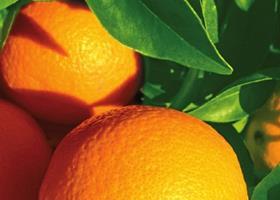
The latest information available on global citrus production indicates that production in the Mediterranean basin will decrease slightly in the coming season.
The forecast was revealed during a recent global citrus teleconference held by European fresh produce association Freshfel and the Southern Hemisphere Association of Fresh Fruit Exporters (SHAFFE), which saw participation from citrus producers worldwide.
“The major objective was to get information on the forthcoming Northern Hemisphere citrus season and feedback on the past (or almost past) Southern Hemisphere season,” said Justin Chadwick, who represented the South African industry.
Mr Chadwick told Fruitnet.com that total citrus production in the Mediterranean basin is forecast to decrease by 2.2 per cent from 17.56m tonnes in 2009/10 to 17.17m tones in 2010/11, with output of oranges decreasing by 6 per cent, grapefruit by 9.5 per cent, soft citrus increasing by 3.3 per cent and lemons increasing by 4.5 per cent.
“Spain reported a recovery after an off-year last season but not to the record levels of three to four years ago,” said Mr Chadwick.
The Spanish crop is expected to come online 10 to 15 days later this year because of delayed maturity, he added. Orange production from Spain is set to increase by 9 per cent, with the growth being mostly centered on later varieties.
Spanish soft citrus production is expected to dip by 5 per cent across all varieties. Lemon production, meanwhile, will recover to normal volumes, which will represent an increase of 20 per cent on last year’s poor yield. The biggest increase is forecast in the Verna variety, but the season will be one or two weeks’ later due to size and colour. The Spanish grapefruit volume is on course to increase by 10 per cent, but will also be delayed by two to three weeks due to low juice content.
In Morocco, citrus production could be similar to last year but there is no official crop estimate yet. Good demand on the domestic market could reduce export volumes, according to industry sources.
Italian orange production is forecast to slip by 2-3 per cent on last year, but with good sizing. Italian lemon production is down while soft citrus output is similar to the previous year, except for clementines, which are on course for a 20 per cent drop. Italian industry representatives say excessive rain the previous season affected the flowering.
Greece is forecasting a good-quality crop, with volumes similar to the previous year, while Cyprus has predicted a recovery in lemon production.
In Israel, the total citrus crop will decrease by 10 per cent, mainly due to a downturn in Shamouti production. Valencia oranges and grapefruit are also looking lighter due to an unseasonably cool spring, difficult flowering conditions and severe heat over summer. Growers are reported to be pulling out orchards of these varieties. On the other hand, easy peeler volumes are expected to increase by about 10 per cent.
The Turkish crop is tipped to increase by 8 per cent, but climatic factors had different implications for the different sectors. Production of oranges and grapefruit are both forecast to decline by 10 per cent, while Satsuma volumes will increase by 25 per cent and lemons by 15 per cent.
Further afield in the US, preliminary estimates show that California navel production will increase by 12 per cent; Florida grapefruit production by 2 to 3 per cent and Florida orange production by 5 per cent.
The Australian citrus crop for 2010 was down by around 30 per cent, and fruit size was much larger than usual, according to industry sources there. The Australian industry reported good markets in the US and Japan, but demand elsewhere in Asia was affected by the predominance of large fruit. Good rains mean that rivers are flowing and indicate that 2011 could be a good year.
During 2010 Argentina enjoyed strong orange markets in Europe and Russia marked by good prices and volumes. However, marketing conditions were poor for satsumas because of hefty volumes from across the Southern Hemisphere, as well as poorer early quality. Argentinian industry sources said that soft citrus performed well, and because of a low lemon crop, pricing was excellent for both the fresh market and for processing.



